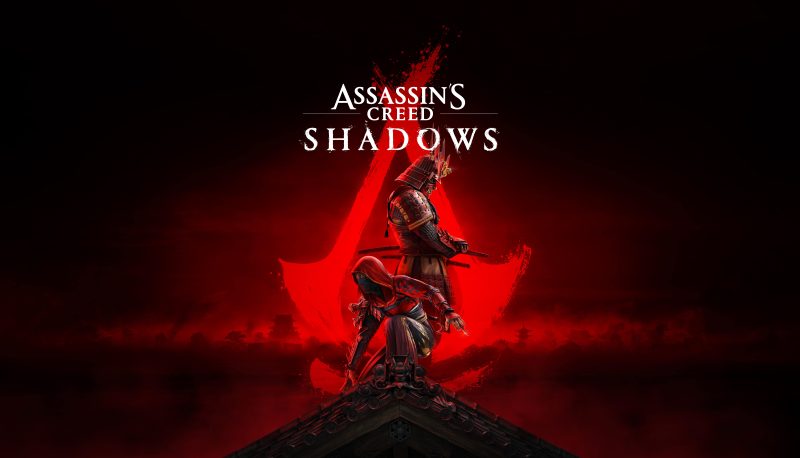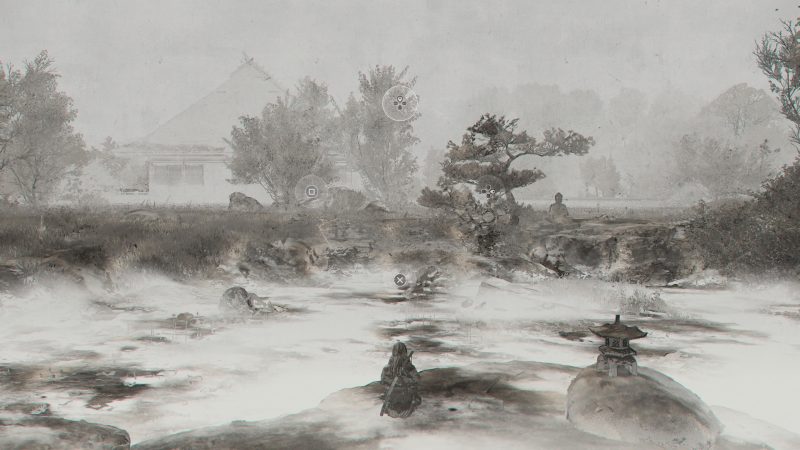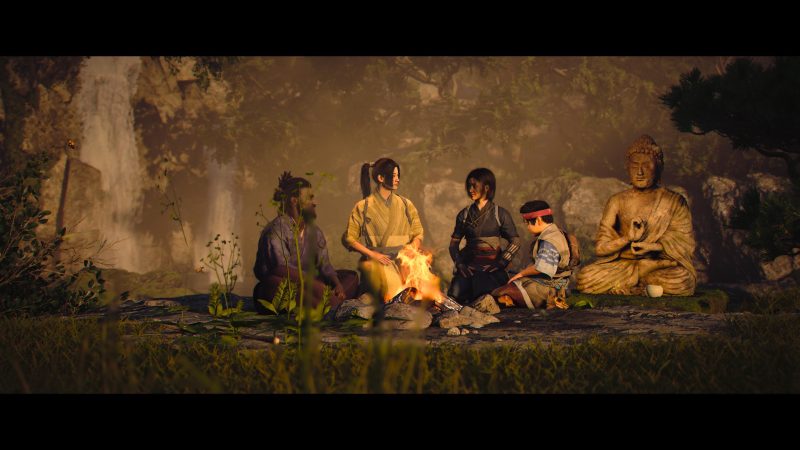Assassin’s Creed Shadows Review (PS5) – The Assassin’s Creed franchise has been around for nearly two decades now, and almost immediately after the first game found success, players all around the world, like me, all had the same thought. “Wouldn’t it be cool if this was set in Japan?”
After years of seemingly avoiding the island nation, Ubisoft has finally brought the series to Japan with Assassin’s Creed Shadows. Arguably the game that fans of the series has waited for the most, it arrives at a time when Ubisoft, coincidentally, needs it the most.
It’s no secret that 2024 did not go the way Ubisoft would have liked, and after multiple big financial misses, the global publisher/developer is on the brink of what could likely be the biggest shift in the company’s history. It’s debatable even if Assassin’s Creed Shadows has arrived soon enough to impact what Ubisoft’s future will look like, and that’s partially upsetting, because Shadows is, at least to me, by far the best Assassin’s Creed game we’ve seen in a long time. It even gets close to being the best game in the entire series.
I have my own issues with it, and there are parts of it that I still credit to Ubisoft still being unable to resist the urge to bloat their games unnecessarily, but overall those problems have never been easier to ignore, thanks to all of the core things Shadows does really well.
Assassin’s Creed Shadows Review (PS5) – Almost The Best Assassin’s Creed Game So Far
A World So Gorgeous I Never Want To Leave
There’s a lot that Assassin’s Creed Shadows does well, but the only aspect of it that I would call striking, is just how good this game looks all the time. I’ve been playing it on a base PS5 console, and even on the performance mode I’m still constantly stunned by how good it looks.
I don’t just mean the excellent landscapes that we’ve come to know the series for, wherever you are in the world for that particular game’s setting. The art direction, and the flairs that come with different in-game moments, like the kuji-kiri side missions, or how the screen changes when you successfully assassinate a target.
The nature shots you get when the seasons change in the middle of fast travelling to another area of the map. The dynamic weather systems that look absolutely incredible whether its raining, snowing, or watching the sun shine through a foggy morning. Or even just stopping to draw a picture of an animal you come across. And of course, I can’t forget to mention the long wide 360-shots you get whenever you synchronize a new viewpoint.
There are so many moments where you’re encouraged to take in the beauty of what’s around you, and not only did I relish those moments, but I took many more of my own to just stop, and appreciate how good this game looks. I’d also be remiss if I didn’t mention the character models, and how the people you’ll meet, and in particular the game’s core cast of characters, all look more expressive and realistic than the series has be capable of before.
I wouldn’t say Ubisoft has pushed itself to being the front-runner for AAA studios making realistic character models. Guerilla Games still holds that spot with each Horizon game. But Shadows is a clear improvement over previous games in the series.
It’s true that Assassin’s Creed has always been known for looking good, and while some of it may come down to the technical fact that this is just the latest game, made with the latest graphics technology, meant to be played on current-gen consoles, Shadows stands atop the rest of the series, and is, for me, the best looking Assassin’s Creed game yet.
Two Protagonists, Two Times The Fun?
Once again for the franchise, we have two protagonists at the heart of the story in Shadows. While previous Assassin’s Creed stories have you choose between two versions of one main character, this is the first time since Assassin’s Creed Syndicate that you’re swapping from one character to another.
Naoe and Yasuke are our central playable characters, each not only offering different narrative experiences depending on who you play as, but two entirely different gameplay experiences. And I mean, entirely different gameplay experiences.
If you were going into Shadows thinking you’d spend equal time with each of them, then you’re welcome to try, but I imagine you’d have a much worse time than you would if you just did what I, and what I imagine most players will do, which is play as Naoe 95% of the time.
I really like Yasuke’s character, and how his personal story progresses across the entire game, where it ends up and how fun it is to play as him during big combat encounters. Out of strictly narrative, or strictly combat moments though, it is painful to play as Yasuke. He’s extremely slow moving, almost to the point where I thought he was slowed down to pad out the game’s runtime (we’ll also get to how Ubisoft still manages to pad Shadows’ runtime out later).
His climbing skills pale in comparison to Naoe, watching him try to climb onto a ledge feels like how it would look if I was trying to vault myself up that same ledge. As if I shouldn’t even try in the first place. And, to Ubisoft’s credit, at least, that seems to be the point their making with how much of a struggle it is to climb and parkour with Yasuke. I had a good laugh when, while trying to walk across a rope as Yasuke, the rope didn’t last two steps before breaking from under me.
Yasuke might not be built for the same challenges Naoe excels at facing, but that doesn’t help the two experiences with each character feeling out of balance. Even when it comes to the combat. Sure, Naoe is much more fragile than Yasuke, and you’re more likely to die with Naoe in big combat encounters. But with the right weapons (namely, Naoe’s crowd-controlling kusarigama), a skilled player can still take down waves of foes with Naoe.
Naoe embodies the full range of the gameplay experience players have come to expect from Assassin’s Creed over the years, while Yasuke unfortunately only covers part of that experience. That’s not to say it isn’t fun to play as him when playing to his advantages, but it does essentially disprove the idea that they are ‘dual protagonists’ and that you could play the whole game as either of them, save for the few select missions that are assigned to a single one of them, for narrative purposes.
Keep Pruning, Ubisoft, You’re Almost There
It’s time to talk about the bloat. Firstly, what I’ve always found to be game-bloating features are, and I think we can agree on this, mechanics and elements of a game that make it longer, not better. Thankfully, in the case of Shadows, you can ignore much of this bloat.
Your home base, or hideout as it’s called in the game, for example. There’s a whole base-building mechanic you can dig into, where you can add a forge to upgrade your weapons, a place to manage the scouts you’ll send out to look for objective markers, a dojo so your allies can train and level-up alongside you, stables for your horses that let you…do something, I imagine.
The reality is that you can ignore basically all of it. You’ll be ushered through setting up a forge with one of the game’s early main quests, but after that you really don’t have to pay attention. You don’t even need to worry about levelling up your weapons, because a better one is always around the corner, as you earn new weapons from completing missions that scale appropriately depending on your character level when you get around to completing that quest.
Oh, and all the stuff regarding the Animus Hub, and the different daily challenges you get to unlock new cosmetics for your weapons and characters, that is all the easiest to ignore. It’s another way in which Ubisoft can’t help but put too many systems into its big games, but I at least appreciated the fact that I never had to bother with it.
Unfortunately, there’s some bloat that you basically can’t ignore, and it’s probably the biggest problem I have with Shadows. The progression system and the game’s pacing is quite poor is not good, and it comes down to two things. First, the level-based gatekeeping regarding the enemies you can defeat, and the weapons and armour you can use that Ubisoft has been doing since it heel turned to making each of these games massive, open-world RPG’s. Second, the Knowledge Points system, which is a new kind of skill point you’re required to collect if you want to be able to unlock the next layer of skills and abilities in the six different skill trees Yasuke and Naoe have.
It’s not the fact that knowledge points exist, that’s the problem. It’s the number of them you have to collect per-knowledge level, and what’s asked of you to collect them. Some of them are tied to a few pretty excellent kuji-kiri side missions, where you play through parts of Naoe’s past. Others, require you to walk around an area, looking for ‘lost pages’ to collect. What’s on these pages? Who knows, you can’t read them. What’s significant about them? That collecting the usually 2-4 scattered across a small area gets you another knowledge point.
And, (not) shockingly, there’s more of those fetch quests than there are flashback missions. The missions that take you through Naoe’s past take longer to complete than the little collecting fetch quests, but they strengthen the narrative, and deepened the connection I had with Naoe’s character. The fetch quests just forced me to waste my time, because if I didn’t do them, I wouldn’t be able to move through the skill tree and earn new abilities to strengthen Naoe and Yasuke.
There are other ways to collect knowledge points. Not unlike the fetch quests, you can earn some by praying at usually 2-3 shrines within a small area. As Yasuke, you can complete short bow and arrow challenges, and a sword-based rhythm mini-game called Kata. At least the challenges are a little more engaging.
The discrepancy between the flashback missions, and everything else you’re asked to do for these knowledge points, so clearly demonstrates how one is about making the game better, and the other is about making it longer. How one is respecting your time as a player, and the other isn’t. It felt like Ubisoft just couldn’t help itself, adding some unnecessary bloat to offset one of the better ideas it had with Shadows.
This is all without even getting into the fact that gatekeeping the enemies you can defeat, and the weapons and armour you can use based on what your character level is, will always just feel arbitrary and exists solely to keep you in the game longer.
I think what frustrates me most about all this, is that this is without a doubt, the least-bloated of all the RPG Assassin’s Creed games so far. The map is still big, but not overwhelmingly so. You have plenty of side quests you can find to take yourself off the main path for a few hours, but the way they’re presented now, in a large board filled with multiple rings to separate them, helps you to really focus in one thing at a time, instead of constantly having to scroll through a giant list, wondering what you should be doing next.
It’s very upsetting to me, that there were clearly many strides taken to really listen to what fans were saying about the previous games, and to learn from other excellent open-world games that have come in the last decade. And yet, a tightly-executed and efficient Assassin’s Creed RPG, that doesn’t force the player to waste their time continues to elude Ubisoft’s grasp like trying to catch a cloud.
Now This Is That Good Assassin’s Creed Stuff
I’ve harped a lot on what Shadows doesn’t do so well, but there is still plenty to gush about, besides how good it looks. The combat, for one, is a lot of fun. Whether I was playing as Yasuke or Naoe, no matter the scenario the combat was engaging, and most importantly, fun to do.
You see a lot of the same attack patterns from the standard soldiers you’ll fight across Japan, but every now and then you’ll still have someone throw in a move you haven’t seen. And then you’ll see Yasuke or Naoe deliver a deadly blow with a new finesse. The fluidity of the animations in combat, and in parkour, are continuously impressive, and make even just running around in Shadows (as Naoe more often than Yasuke) fun.
As much as I’ve always loved the Assassin’s Creed series for its stealth gameplay, I’ve equally loved getting into big fights, surrounded by enemies and taking them all down with cool finishing moves. Shadows has both in spades, and it’s the most fun I’ve had with the combat since the pre-RPG era of Assassin’s Creed.
Speaking of the stealth, sneaking around as Naoe scratches that itch for anyone missing stealth games in their life really well. It’s impressive how well Ubisoft game-ified being able to take out light sources in an area to move under the cover of darkness. It’s been a long time since Ubisoft made a proper Splinter Cell game, but the improvements to stealth in Shadows compared to the previous games make me even more excited to see what’ll come of the upcoming Splinter Cell Remake.
Exploration is another area where Shadows has greatly improved over previous games. Instead of just being told where to go for your next objective, I much preferred being able to sniff it out myself through the given context clues. I also loved how this helped cut down on the amount of time I spent using Naoe’s eagle vision. Sure, it’s a nice gimmick to have if you’re really struggling with a section, but I’m more against swapping out the wonderful colours and game art on display for grey muck.
Lastly, Naoe and Yasuke are what tie it all together. Their stories, and their characters, are two of my favourites across the whole series. Shadows features a lot of excellent writing, and voice performances from its cast. The dialogue options you’re given rarely seemed to have a material outcome on the story, but each option packed an interesting punch that I was always keen to hear.
Beyond the combat, stealth, and world design, Assassin’s Creed has lived and died on how strong its central characters are. Naoe and Yasuke can stroll straight to the front of the line to join the likes of Ezio and Edward Kenway, when talking about the best protagonists in the series.
Almost The Best Assassin’s Creed Game So Far
Assassin’s Creed Shadows is ultimately a triumph for Ubisoft. The whole company is going through an incredibly tumultuous time. We don’t know what shape it’ll take even before the year is over, and yet the global developer/publisher was able to deliver on what is arguably the most anticipated game in its biggest series.
Fans like myself have waited years for the franchise to make its way to Japan, and even in a post-Ghost of Tsushima world, Shadows can still stand on its own as a worthwhile experience. It’s not a perfect game by any means. The progression issues still bog it down, and the open-world still lacks that Elden Ring quality of seeing something interesting in the distance and wanting to go to it, or emergent gameplay experiences that occur just traveling on the road from one objective to another. I also can’t say it’ll make you an Assassin’s Creed fan, if you’re just now thinking about getting into the series.
But it’s definitely Ubisoft’s best pitch among its big RPG Assassin’s Creed games. It’s almost the best game across the entire series, for its excellent combat, art, exploration, and characters. And for the first time in a long time, I’m looking forward to what the rest of the franchise has in store.
Assassin’s Creed Shadows is available on PS5 on March 20, 2025.
Review code generously provided by the publisher.
Assassin’s Creed Shadows Guides:










